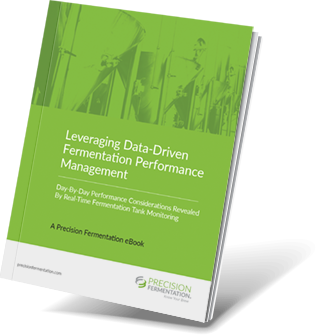Water Chemistry: What Every Commercial Brewer Needs to Know

Longtime environmental engineer Martin Brungard is an expert on water. As a technical advisor for the Brewers Association’s text Water: A Comprehensive Guide for Brewers, he knows what a difference this highly variable and often overlooked ingredient — which comprises up to 97% of a beer’s volume — can make to the drinkability of the final product. So he wishes both brewing schools and brewers would devote more attention to the importance of ensuring its suitability for making suds of varying styles.
“I know of a brewer who’d won several World Beer Cup gold medals for one particular beer but the rest of his beers were just terrible,” he says. “When brewers pay a little bit of attention to their water then their full repertoire of beers improves tremendously.”
One water supplier can draw from many sources, from wells to rivers to springs, and every fount may vary in its chemical composition. Even a single source can fluctuate when it rains or snows. So imagine the variety between geographic locations. What happens when a brewery draws water whose mineral makeup results in less-than-stellar styles? Or a craft brewer in Maine aims to recreate the magic of the Belgians? Or a global behemoth like Anheuser-Busch InBev must create consistency between its far-flung facilities?
John Palmer and Colin Kaminsky write in Water, “This is the first take-home message: Know your water source and what to expect from it.”
How Brewing Water Develops Its Unique Chemistry
Water picks up minerals as it contacts and permeates rock and soil; when those minerals dissolve they either gain or lose molecules and become known as ions. With their limestone and gypsum geological formations, a lot of the American west and midwest is characterized by hard water, meaning it contains high quantities of calcium and magnesium ions. The prevalence of granite and sandstone in mountain and coastal regions suggests a softer water profile.
Contrary to conventional wisdom, Brungard says both types of water can produce equally enjoyable beer. However, because certain mineral salts lend themselves better to certain colors and styles (think of a classic example like Pilsner, originally brewed with the soft water of Pilzen), a brewer may wish to increase or reduce hardness to achieve their desired effect.
Boosting the calcium and magnesium content can be accomplished simply by adding calcium or magnesium chloride, calcium sulfate (gypsum), calcium carbonate (chalk), magnesium sulfate (Epsom salt) or calcium hydroxide (pickling lime).
According to Jason Trujillo, who works on beer chemistry in New Belgium’s QA department, that brewery adds gypsum to the mash or boil (depending on the recipe) to harden its water. Because of divergent water sources, its sites in Colorado and North Carolina add different quantities to the same beer to reach a shared target.
Reducing hardness usually requires a more elaborate process, and not all solutions work for all types of hardness. Options include:
- A distilled or reverse osmosis (RO) water dilution.
- A boil.
- An addition of pickling lime.
How Alkalinity Impacts Brewing Water Quality
Alkalinity represents the buffering capacity of water, or, as the U.S. Geological Survey defines it, alkalinity provides “a measure of the ability of the water body to neutralize acids and bases and thus maintain a fairly stable pH level.”
Water used for sparging and most brewing should register low in alkalinity, which presents a problem considering that most American water sources are very high in alkalinity. Brungard believes beers can end up tasting dull, flat, and not very lively unless brewers have added enough acid to the mash.
With an acid addition, he says, brewers “end up with a much brighter beer that dances on your tongue.”
A distilled or RO water dilution works well to lower alkalinity, and though massive breweries like Guinness treat at least some of their water with RO, Brungard says, “Water treatment is not terribly expensive. The advent of RO treatment equipment put decent water into the hands of just about anybody.”
Occasionally a beer – often a dark style like porter or stout, brewed with acidic roast malt – calls for mashing water with higher alkalinity to buffer the low pH created by the high-acid malts. This can be accomplished by adding pickling lime (calcium hydroxide), or baking soda.
Removing Disinfectants from Brewing Water
To make drinking water safe to drink, almost all US water utilities add disinfectants like chlorine to the water supply; the water reaching the brewery will likely have residual traces. While beneficial to human health, these chemicals can combine with the compounds in wort to form chlorophenols, which can smell and taste soapy or detergent-like at very low levels. According to Brungard, typical tap water has approximately 100 times the concentration of chlorine compounds required to produce chlorophenols and the failure to completely remove those chlorine compounds from the raw water can taint your beers.
To remove chlorine from water, a brewer may choose to treat it by boiling, aerating, filtering through activated carbon or adding metabisulfite or ascorbic acid. A good step in maintaining beer quality is to test and confirm that all chlorine compounds have been removed from the water prior to using it in brewing.
“Completely removing disinfectants from municipal water eliminates a huge detractor in beer quality right there,” Brungard says.
Free eBook: Leveraging Data-Driven Fermentation Performance Management
 Can fermentation management be improved, as a process? This eBook explores, in detail, how fermentation performance data analysis helps elevate product and business outcomes in a modern brewery, whether brewpub, microbrewery or regional craft brewer.
Can fermentation management be improved, as a process? This eBook explores, in detail, how fermentation performance data analysis helps elevate product and business outcomes in a modern brewery, whether brewpub, microbrewery or regional craft brewer.
You will learn:
- Day-by-day performance considerations – learned through the extensive examination of real-time fermentation tank data.
- Key recommendations from the Precision Fermentation science team at each major step of fermentation – “Day zero” (i.e. before you pitch your yeast), the first 24 hours, and day two through the end of fermentation.
- Best practices – Activity to watch out for, broken down by each key measurement – Dissolved oxygen, gravity, pH, pressure, internal/external temperature, and conductivity.
- Key findings that can help you solve problems and improve your results.

